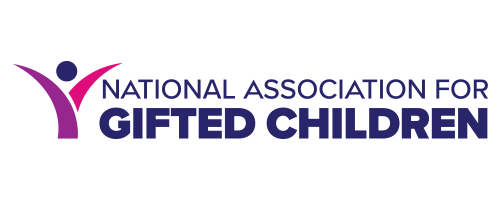Lessons From a Lifetime Advocate: Remembering Ginny Burney
By Kristie Speirs Neumeister
This spring the field of gifted education unexpectedly lost one of its most ardent advocates, Dr. Virginia “Ginny” Burney. Ginny wore many hats in the field of education, beginning her career as a math teacher and then serving in the capacity of a guidance counselor, school administrator, and eventually professor of Educational Psychology where she taught graduate level courses in gifted education. Her advocacy for gifted students began for her own precocious children who needed access to curriculum and instruction beyond grade level content to be engaged and challenged. This experience opened her eyes to the need for state and national supports for gifted children. In her own words, she said,
My years as a parent of three gifted children and as an administrator in a school for gifted children reinforced for me the special needs of gifted students. It also made me concerned every day for those gifted children who did not have parents who were comfortable or able to articulate what it was their children needed at school and who did not have educational experiences designed for gifted children. I vowed to advocate for gifted education in the public schools.
Ginny dedicated the next three decades of her life to this cause and in the process became one of the greatest champions for gifted students not only in her home state of Indiana but at the national level as well. Her effective influence on legislation and services for gifted students earned her both the Lifetime Service Award from the Indiana Association for the Gifted and the David A. Belin Advocacy Award from the National Association for Gifted Children. For the last two decades I was fortunate to work alongside Ginny on advocacy efforts in Indiana and nationally. As I reflect on her mentorship and the lessons I learned from her during our work together, one overarching concept stands out, and that is her sage advice to always “Be part of the solution, not the problem.” Ginny told me that in the beginning, she thought that
if I just explained to the Department of Education that these kids had different academic and social emotional needs, people would be amenable to instituting measures that would support these learners. I learned that it is not enough to say there is a need. IT IS NOT JUST ABOUT A GOOD IDEA. You have to propose a solution to the Department of Education or a member of the legislature who agrees with you [that] there is a problem, it needs to be solved, and your solution is the right solution for that problem.
At first this may seem obvious, but so often we approach teachers, principals, and legislators with complaints that gifted children are overlooked and unchallenged and therefore disengaged in school. The “good idea” would be to increase rigor by offering services that would enable them access to higher level curriculum and instruction to meet their needs. But as Ginny found out, it is not about the good idea. For example, she explained that
an administrator needs to make the system work to meet the greatest needs for the greatest number of students and staff. By definition, gifted students make up a small percentage of the student population. Administrators have many competing needs and challenges; [therefore], advocating for gifted kids and their education is not always well received. We have tried to do that from the standpoint of it being the right thing to do, and it is, but others may not see it as a priority or worry it could be a negative thing for all of those not selected.”
So, what are we to do? How can we ensure the needs of gifted students are being met in schools? Ginny taught me that the more effective approach is to find a way to be part of the solution rather than being seen as another problem. To do that effectively first requires becoming well versed on the “what”— what problems are already on the horizon, and what education initiatives and/ or proposed legislation is being discussed/drafted to address them? Second involves gaining an understanding of all perspectives—what are the concerns and viewpoints of all stakeholder groups on this issue? And finally, it involves putting it all together by figuring out how the needs of gifted students could fit into the proposed initiative or legislation and align with the concerns and viewpoints of other stakeholder groups.
If the needs of gifted students are not being addressed by the proposed initiative or legislation, or if the impact is negative, then how might it be adapted or modified, so these students can grow and thrive as well? This approach shows educational leaders and policy makers that we want to be on the same team; we understand that education is a system, and gifted students are part of that system. Ginny often said, “gifted students are not more important than other students, but they are just as important." As such, effective advocates will need to demonstrate their understanding of all stakeholder views and explain how the needs of gifted children fit into a larger framework and offer a solution that addresses the needs of gifted children without detracting from the needs of other groups. All proposed solutions need to reflect this notion if they are to be well received. Currently, I am keeping this advice at the forefront of my thoughts as I work with the Indiana Association for the Gifted to propose modifications to our state’s proposed new high school diploma pathways to ensure a rigorous pathway of courses is available for our most able learners.
Ginny has left a lasting mark on the field of gifted education. As NAGC President Shelagh Gallagher noted, “the phrase ‘small but mighty’ comes to mind when [one] thinks of Ginny. She was always game to try a new idea, consider problems in a new light, and lend her elbow grease to efforts to improve circumstances for gifted students.” I hope that I, as well as others who had the good fortune to work with her, can carry her advocacy lessons forward to continue to maximize the potential of all gifted students.
Kristie Speirs Neumeister is a member of the Board of Directors for the National Association for Gifted Children. She directs the gifted and talented licensure program at Ball State University, and she is the president-elect of the Indiana Association for the Gifted.


